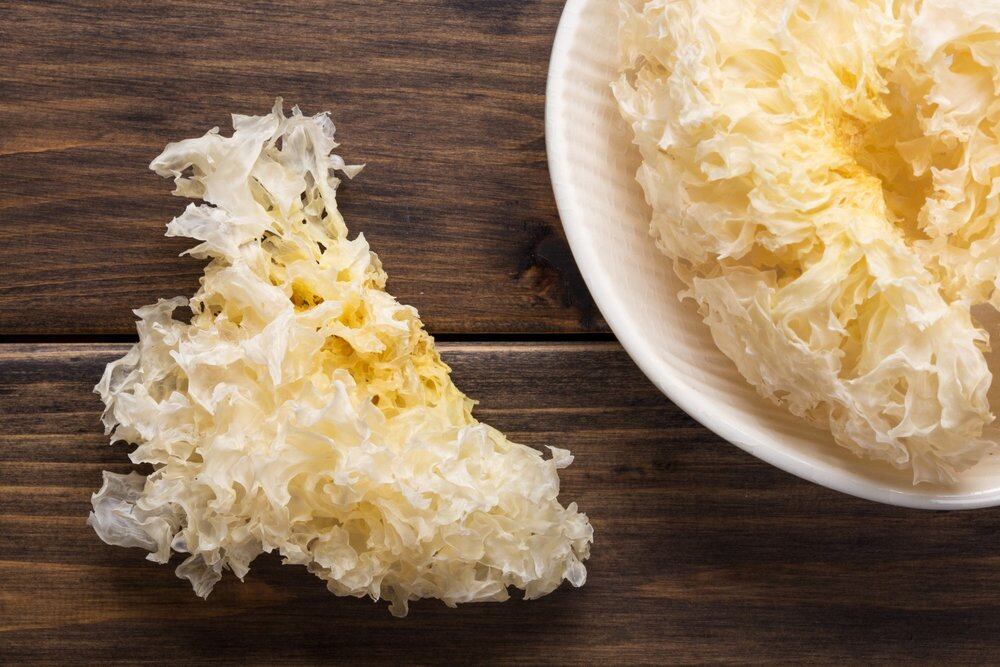In recent times, there has been a growing interest in cosmetic products made from natural ingredients considered safe for human use. These products often contain extracts derived from specific plants rich in beneficial substances like proteins, vitamins, minerals, antioxidants and natural preservatives.
One such example is Tremella fuciformis or snow fungus extract, a natural alternative to hyaluronic acid that helps the skin retain water deep within its cells and helps the skin to combat free radicals, which can cause premature skin ageing.
Snow fungus is a type of edible mushroom found in China and other Asian countries. It has been used in traditional Chinese medicine and is known for its various health benefits. The extract obtained from this mushroom contains polysaccharides, which are complex carbohydrates, as well as other compounds like proteins and vitamins. These polysaccharides have been found to possess several beneficial properties, including antioxidant, anti-ageing, and anti-inflammatory effects.
Let it snow
Researchers at the Adam Mickiewicz University conducted a study to improve the composition of cosmetic products by using natural substitutes instead of synthetic substances. They wanted to determine if these natural ingredients had the same properties and effects as their synthetic counterparts, or if their inclusion in cosmetic products was just a marketing strategy. Specifically, they focused on optimising the formulation of cosmetics using snow fungus extract and examining their physical and skin care properties.
The researchers conducted dermatological tests on group of 20 healthy volunteers (16 women and four men), aged 18 to 69, with a negative history of allergic responses to ensure the safety of the cosmetic formulations. The results showed that none of the participants experienced any redness, swelling, or irritation on their skin 48 and 72 hours after using the products.
They also discovered that cosmetics containing the snow fungus extract were able to reduce transepidermal water loss (TEWL) by 12.4% compared to a formulation without this active ingredient. This means the extract helped to prevent excessive water evaporation from the skin, leading to improved hydration.
Tests performed to measure the hydration level of the skin after applying the products found that both formulations increased skin hydration but the one containing the extract had a greater effect in this regard; the extract helped retain or draw water from deeper layers of the skin, leading to increased hydration.
Formulation, sensitisation and stabilisation
The researchers found that the best way to make the product was to add the snow fungus extract during the preparation of the product. If they added sodium gluconate before adding the extract, the extract ended up clumping and dissolving incompletely. They also performed microbiological tests and analysed the composition of the products to ensure their safety and effectiveness, as well as their compliance with EU requirements for cosmetics.
At the same time, they conducted dermatological tests to assess how the products affected the volunteers’ skin. The results showed that both formulations, with and without the extract, did not irritate or sensitize the skin and met the requirements for skin compatibility.
Additionally, the researchers performed stability tests to see how the products hold up over time. The tests showed that both formulations were stable but the one with the extract was slightly less stable due to changes in particle size.
The study showed that using snow fungus extract in skincare products improved the hydration and moisture retention of the skin. Both products were found to be safe and effective, and met EU regulatory requirements for cosmetics but the formulation with the extract reduced water loss more effectively than the one without it.
The study also highlighted the potential of natural ingredients, like snow fungus extract, as effective alternatives to synthetic substances in cosmetic products. These natural ingredients offer various benefits for the skin, including hydration, protection against free radicals, and anti-ageing effects.
Source: Cosmetics
“Optimization of the Composition of a Cosmetic Formulation Containing Tremella fuciformis Extract (Fungi)”
https://doi.org/10.3390/cosmetics10030082
Authors: Bartosz Woźniak, et al.


